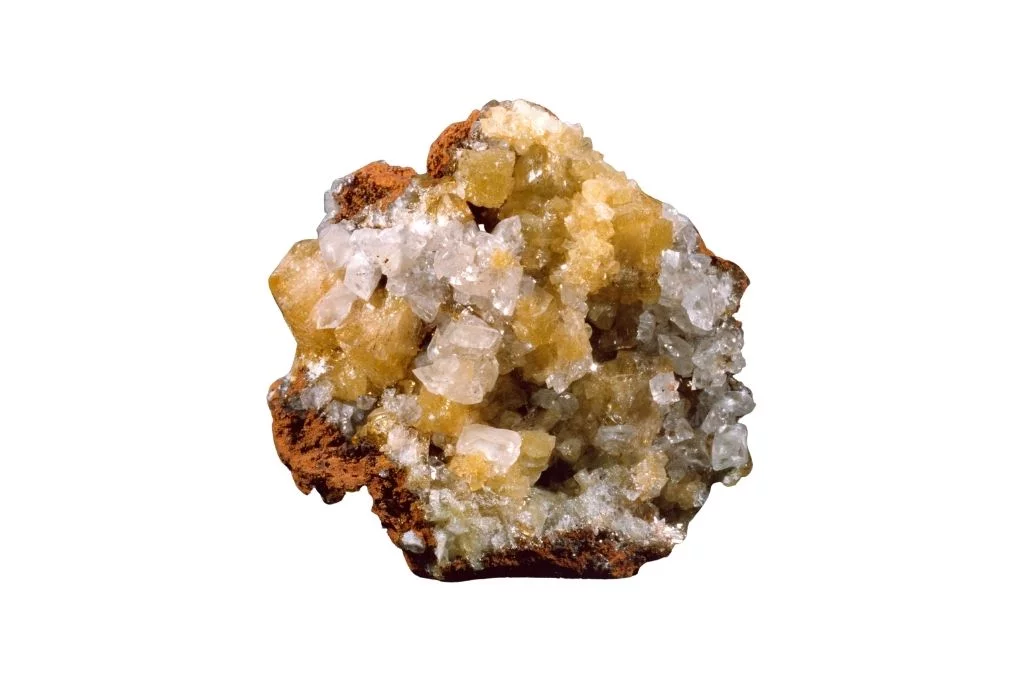Physical Appearance of Adamite
Adamite is a striking mineral known for its diverse range of colors and distinctive crystal formations. This zinc arsenate hydroxide mineral typically occurs in vibrant shades of yellow, green, or colorless varieties. However, it can also be found in rarer hues such as pink, purple, or blue, depending on the presence of trace elements or impurities.
Crystal Structure
The crystal structure of adamite is orthorhombic, often forming in radiating clusters or rosette-like aggregates. Individual crystals are usually small, typically measuring less than a centimeter in length. They commonly appear as thin, blade-like prisms or tabular crystals with a distinct elongated shape.
Notable Physical Characteristics
One of the most remarkable features of adamite is its fluorescence under ultraviolet light. Many specimens, particularly those with a yellowish-green color, exhibit a brilliant green fluorescence when exposed to UV radiation. This property makes adamite highly prized among mineral collectors and enthusiasts.
Unique Aspects
Adamite’s luster is another distinguishing characteristic, ranging from vitreous to silky or pearly. The mineral’s transparency can vary from transparent to translucent, with some specimens displaying a subtle internal glow. Additionally, adamite often forms in association with other minerals, creating visually striking combinations on matrix specimens.
Variations and Rarities
While yellow and green are the most common colors, some rare variations of adamite are highly sought after. Cuprian adamite, for instance, contains copper and displays a stunning blue to blue-green color. The pink variety, sometimes called “paradamite,” is another prized form of this mineral, showcasing the diversity within the adamite species.
Historical and Cultural Significance of Adamite
Adamite, a rare zinc arsenate hydroxide mineral, holds a modest place in historical and cultural contexts. Named after the French mineralogist Gilbert-Joseph Adam in 1866, this mineral has been primarily of interest to collectors and researchers due to its vibrant coloration and unique crystal structure. While not as prominent as other gemstones in cultural narratives, adamite has garnered appreciation among mineral enthusiasts for its beauty and rarity.
Metaphysical Associations
In the realm of crystal healing and metaphysical practices, adamite is believed to possess various spiritual properties. It is often associated with clarity of mind, enhanced communication, and emotional balance. Some practitioners claim that adamite can help in accessing higher states of consciousness and facilitating spiritual growth. The mineral is also thought to promote self-discovery and aid in overcoming personal obstacles.
Common Uses and Benefits
While adamite is not typically used in industrial applications, it finds its primary use in the collector’s market and alternative healing practices. Mineral collectors prize adamite specimens for their striking appearance and rarity. In crystal therapy, adamite is often employed in meditation practices, where it is believed to enhance focus and promote inner peace. Some individuals use adamite in energy healing sessions, placing it on the body to allegedly stimulate personal growth and emotional healing.
Traditional and Modern Applications
Traditionally, adamite has been primarily valued for its aesthetic qualities rather than practical applications. In modern times, it continues to be sought after by mineral collectors and enthusiasts. The growing interest in alternative healing methods has also led to increased use of adamite in crystal therapy and energy work. Some jewelry makers incorporate adamite into unique, custom pieces, although its softness limits its use in everyday jewelry. In scientific circles, adamite remains a subject of study for mineralogists and geologists, contributing to our understanding of mineral formation and composition.

